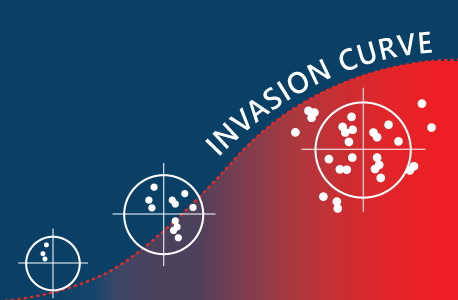
Setting the stage for invasive species research
The coronavirus pandemic has shown the need to act hard and fast when new diseases emerge, the same approach has to be taken on invasive species.

The coronavirus pandemic has shown the need to act hard and fast when new diseases emerge, the same approach has to be taken on invasive species.
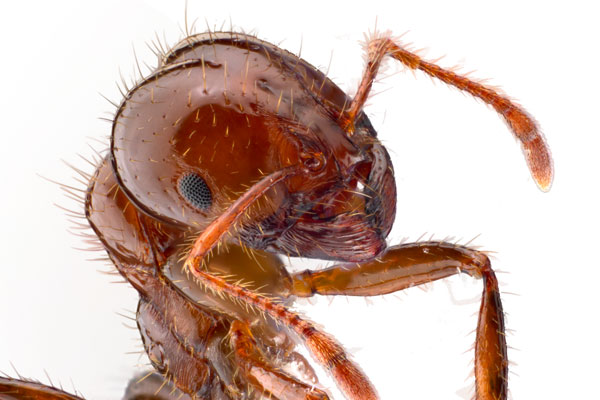
The 2019 federal budget was a ripper for tackling some of Australia’s most destructive invading ants but has missed a major long-term investment opportunity.
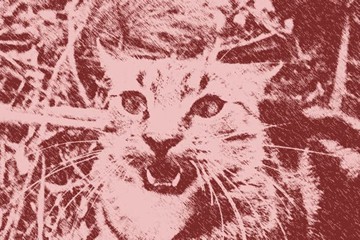
Do you know an individual or organisation who deserves recognition for their work protecting Australia from environmental weeds, diseases or pest animals?
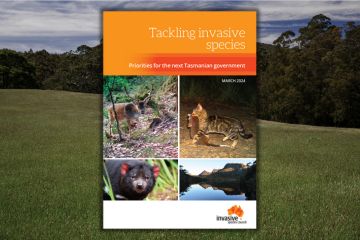
Tasmania is a remarkable island state with native animals and plants found nowhere else on earth, some of the most spectacular protected areas in Australia, and highly valued agriculture, forestry, and tourism sectors.
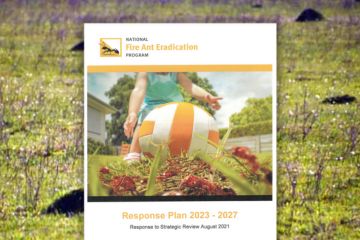
These documents, made public by the Invasive Species Council, outline the Queensland government’s fire ant eradication budget & work plan.

While many positive elements of the former strategy are worth retaining, developing this new strategy provides an opportunity for new ideas and improvements – as suggested in this submission.

While many positive elements of the former strategy are worth retaining, developing this new strategy provides an opportunity for new ideas and improvements – as suggested in this submission.

Investing in prevention and early action are always the most cost-effective and damage mitigating approach to invasive species and our national biosecurity system is fundamental to this.

In this submission, we call on the Hon Kate Worden MLA, Minister for Environment Climate Change and Water Security to declare buffel grass a weed under the NT Weeds Management Act for all land tenure in the Northern Territory.
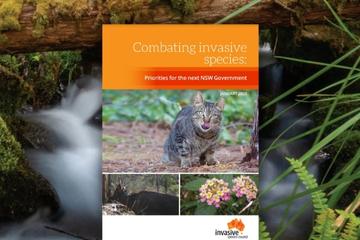
We face a crisis and current measures and resources in NSW are insufficient to halt and mitigate the impact of established invasive species and prevent the arrival and spread of new invasive species. In this document we detail priority actions the next NSW government can take that will strengthen the NSW biosecurity system and address priority environmental threats from invasive species.
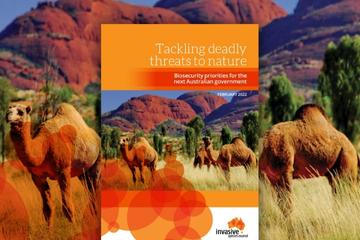
Initiatives and policies to improve Australia’s capacity to keep nature safe from new and established invasive species.
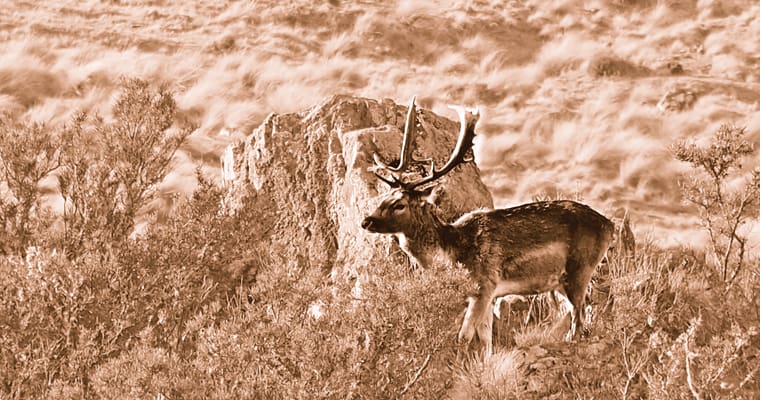
Given their rapid growth, spread and impacts there is no justification for feral deer to remain Partly Protected Wildlife in Tasmania.
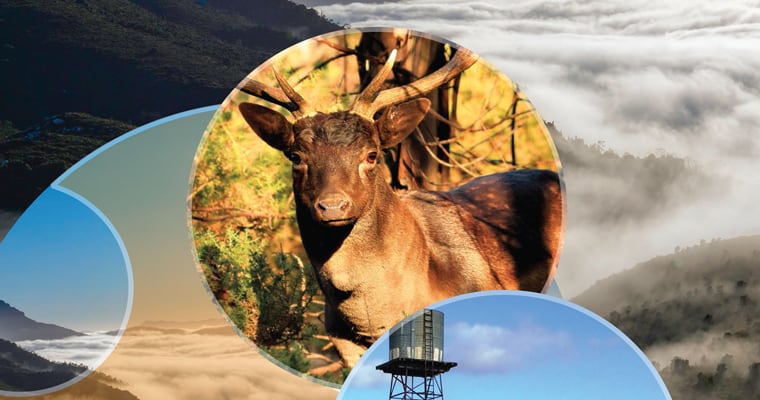
This strategy maps out a path for Tasmania to rapidly reduce increasing numbers of fallow deer and manage future numbers under a biosecurity-first approach.

This report by Tim Low explores the health and environmental implications of using glyphosate in Australia on crops and to stop weeds invading native ecosystems.

A report into the ethical considerations of using 1080 to control feral animals has found the conservation benefits necessitate its use until an alternative is available.

The coronavirus pandemic has shown the need to act hard and fast when new diseases emerge, the same approach has to be taken on invasive species.

The 2019 federal budget was a ripper for tackling some of Australia’s most destructive invading ants but has missed a major long-term investment opportunity.

Do you know an individual or organisation who deserves recognition for their work protecting Australia from environmental weeds, diseases or pest animals?

Tasmania is a remarkable island state with native animals and plants found nowhere else on earth, some of the most spectacular protected areas in Australia, and highly valued agriculture, forestry, and tourism sectors.

These documents, made public by the Invasive Species Council, outline the Queensland government’s fire ant eradication budget & work plan.

While many positive elements of the former strategy are worth retaining, developing this new strategy provides an opportunity for new ideas and improvements – as suggested in this submission.

While many positive elements of the former strategy are worth retaining, developing this new strategy provides an opportunity for new ideas and improvements – as suggested in this submission.

Investing in prevention and early action are always the most cost-effective and damage mitigating approach to invasive species and our national biosecurity system is fundamental to this.

In this submission, we call on the Hon Kate Worden MLA, Minister for Environment Climate Change and Water Security to declare buffel grass a weed under the NT Weeds Management Act for all land tenure in the Northern Territory.

We face a crisis and current measures and resources in NSW are insufficient to halt and mitigate the impact of established invasive species and prevent the arrival and spread of new invasive species. In this document we detail priority actions the next NSW government can take that will strengthen the NSW biosecurity system and address priority environmental threats from invasive species.

Initiatives and policies to improve Australia’s capacity to keep nature safe from new and established invasive species.

Given their rapid growth, spread and impacts there is no justification for feral deer to remain Partly Protected Wildlife in Tasmania.

This strategy maps out a path for Tasmania to rapidly reduce increasing numbers of fallow deer and manage future numbers under a biosecurity-first approach.

This report by Tim Low explores the health and environmental implications of using glyphosate in Australia on crops and to stop weeds invading native ecosystems.

A report into the ethical considerations of using 1080 to control feral animals has found the conservation benefits necessitate its use until an alternative is available.

The coronavirus pandemic has shown the need to act hard and fast when new diseases emerge, the same approach has to be taken on invasive species.

The 2019 federal budget was a ripper for tackling some of Australia’s most destructive invading ants but has missed a major long-term investment opportunity.

Do you know an individual or organisation who deserves recognition for their work protecting Australia from environmental weeds, diseases or pest animals?

Tasmania is a remarkable island state with native animals and plants found nowhere else on earth, some of the most spectacular protected areas in Australia, and highly valued agriculture, forestry, and tourism sectors.

These documents, made public by the Invasive Species Council, outline the Queensland government’s fire ant eradication budget & work plan.

While many positive elements of the former strategy are worth retaining, developing this new strategy provides an opportunity for new ideas and improvements – as suggested in this submission.

While many positive elements of the former strategy are worth retaining, developing this new strategy provides an opportunity for new ideas and improvements – as suggested in this submission.

Investing in prevention and early action are always the most cost-effective and damage mitigating approach to invasive species and our national biosecurity system is fundamental to this.

In this submission, we call on the Hon Kate Worden MLA, Minister for Environment Climate Change and Water Security to declare buffel grass a weed under the NT Weeds Management Act for all land tenure in the Northern Territory.

We face a crisis and current measures and resources in NSW are insufficient to halt and mitigate the impact of established invasive species and prevent the arrival and spread of new invasive species. In this document we detail priority actions the next NSW government can take that will strengthen the NSW biosecurity system and address priority environmental threats from invasive species.

Initiatives and policies to improve Australia’s capacity to keep nature safe from new and established invasive species.

Given their rapid growth, spread and impacts there is no justification for feral deer to remain Partly Protected Wildlife in Tasmania.

This strategy maps out a path for Tasmania to rapidly reduce increasing numbers of fallow deer and manage future numbers under a biosecurity-first approach.

This report by Tim Low explores the health and environmental implications of using glyphosate in Australia on crops and to stop weeds invading native ecosystems.

A report into the ethical considerations of using 1080 to control feral animals has found the conservation benefits necessitate its use until an alternative is available.
Get our blog the Feral Herald delivered to your inbox.
Our protected areas are being trashed, trampled, choked and polluted by an onslaught of invaders. Invasive species are already the overwhelming driver of our animal extinction rate, and are expected to cause 75 of the next 100 extinctions.
But you can help to turn this around and create a wildlife revival in Australia.
From numbats to night parrots, a tax-deductible donation today can help defend our wildlife against the threat of invasive weeds, predators, and diseases.
As the only national advocacy environment group dedicated to stopping this mega threat, your gift will make a big difference.
A silent crisis is unfolding across Australia. Every year, billions of native animals are hunted and killed by cats and foxes. Fire ants continue to spread and threaten human health. And the deadly strain of bird flu looms on the horizon. Your donation today will be used to put the invasive species threat in the media, make invasive species a government priority, ensure governments take rapid action to protect nature and our remarkable native wildlife from invasives-led extinction, death and destruction.
If you are having trouble submitting a form, please read this guide.
Please fill out the following form and one of our team will be in contact to assist as soon as possible. Please make sure to include any helpful information, such as the device you were using (computer, tablet or mobile phone) and if known, your browser (Mozilla Firefox, Chrome, Safari etc)
"*" indicates required fields
Dear Project Team,
[YOUR PERSONALISED MESSAGE WILL APPEAR HERE.]
I support the amendment to the Kosciuszko National Park Wild Horse Heritage Management Plan to allow our incredible National Parks staff to use aerial shooting as one method to rapidly reduce feral horse numbers. I want to see feral horse numbers urgently reduced in order to save the national park and our native wildlife that live there.
The current approach is not solving the problem. Feral horse numbers have rapidly increased in Kosciuszko National Park to around 18,000, a 30% jump in just the past 2 years. With the population so high, thousands of feral horses need to be removed annually to reduce numbers and stop our National Park becoming a horse paddock. Aerial shooting, undertaken humanely and safely by professionals using standard protocols, is the only way this can happen.
The government’s own management plan for feral horses states that ‘if undertaken in accordance with best practice, aerial shooting can have the lowest negative animal welfare impacts of all lethal control methods’.
This humane and effective practice is already used across Australia to manage hundreds of thousands of feral animals like horses, deer, pigs, and goats.
Trapping and rehoming of feral horses has been used in Kosciuszko National Park for well over a decade but has consistently failed to reduce the population, has delayed meaningful action and is expensive. There are too many feral horses in the Alps and not enough demand for rehoming for it to be relied upon for the reduction of the population.
Fertility control as a management tool is only effective for a small, geographically isolated, and accessible population of feral horses where the management outcome sought is to maintain the population at its current size. It is not a viable option to reduce the large and growing feral horse population in the vast and rugged terrain of Kosciuszko National Park.
Feral horses are trashing and trampling our sensitive alpine ecosystems and streams, causing the decline and extinction of native animals. The federal government’s Threatened Species Scientific Committee has stated that feral horses ‘may be the crucial factor that causes final extinction’ for 12 alpine species.
I recognise the sad reality that urgent and humane measures are necessary to urgently remove the horses or they will destroy the Snowies and the native wildlife that call the mountains home. I support a healthy national park where native species like the Corroboree Frog and Mountain Pygmy Possum can thrive.
Dear Project Team,
[YOUR PERSONALISED MESSAGE WILL APPEAR HERE.]
I support the amendment to the Kosciuszko National Park Wild Horse Heritage Management Plan to allow our incredible National Parks staff to use aerial shooting as one method to rapidly reduce feral horse numbers. I want to see feral horse numbers urgently reduced in order to save the national park and our native wildlife that live there.
The current approach is not solving the problem. Feral horse numbers have rapidly increased in Kosciuszko National Park to around 18,000, a 30% jump in just the past 2 years. With the population so high, thousands of feral horses need to be removed annually to reduce numbers and stop our National Park becoming a horse paddock. Aerial shooting, undertaken humanely and safely by professionals using standard protocols, is the only way this can happen.
The government’s own management plan for feral horses states that ‘if undertaken in accordance with best practice, aerial shooting can have the lowest negative animal welfare impacts of all lethal control methods’.
This humane and effective practice is already used across Australia to manage hundreds of thousands of feral animals like horses, deer, pigs, and goats.
Trapping and rehoming of feral horses has been used in Kosciuszko National Park for well over a decade but has consistently failed to reduce the population, has delayed meaningful action and is expensive. There are too many feral horses in the Alps and not enough demand for rehoming for it to be relied upon for the reduction of the population.
Fertility control as a management tool is only effective for a small, geographically isolated, and accessible population of feral horses where the management outcome sought is to maintain the population at its current size. It is not a viable option to reduce the large and growing feral horse population in the vast and rugged terrain of Kosciuszko National Park.
Feral horses are trashing and trampling our sensitive alpine ecosystems and streams, causing the decline and extinction of native animals. The federal government’s Threatened Species Scientific Committee has stated that feral horses ‘may be the crucial factor that causes final extinction’ for 12 alpine species.
I recognise the sad reality that urgent and humane measures are necessary to urgently remove the horses or they will destroy the Snowies and the native wildlife that call the mountains home. I support a healthy national park where native species like the Corroboree Frog and Mountain Pygmy Possum can thrive.